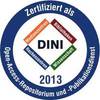Preview |
PDF, English
Download (64MB) | Terms of use |
Abstract
The challenging environment of high-energy heavy-ion collisions demands continuous advancements in precision tracking and vertex detection. To meet these requirements, the ALICE ITS3 upgrade at CERN is designed to push the boundaries of CMOS monolithic detector technology by integrating wafer-scale, ultra-thin, and bent silicon sensors into the ALICE experiment. Within the scope of this thesis two critical aspects of this innovative detector design are addressed: the feasibility of bending CMOS monolithic pixel sensors, specifically the ALPIDE sensors used in the ITS2 detector, and the material budget associated with carbon foam support structures for future wafer-scale sensors in the ITS3. Through a series of extensive test beam campaigns, it was demonstrated that ALPIDE sensors retain their full functionality and performance metrics after bending. The sensors showed unchanged efficiency and spatial resolution compared to their flat counterparts, regardless of the bending radius, confirming the viability of bent CMOS MAPS technology for future detector designs, especially in applications requiring low material budgets and high tracking precision, like the ITS3. Beyond the performance evaluation of the sensors, the thesis explores the characterization of carbon foam support structures intended for the ITS3 detector. As the primary structural component in the active area, the carbon foam plays a crucial role in minimizing the material budget, thereby enhancing tracking precision and efficiency. Using material budget imaging techniques, this study evaluates the material contribution of carbon foam samples, validating their potential in the final detector assembly. Overall, this thesis provides much needed insights into the electrical, mechanical and material properties of key components in the ITS3 upgrade, reinforcing their potential for application in particle detectors that prioritize low mass and proximity to the interaction vertex.
| Document type: | Dissertation |
|---|---|
| Supervisor: | Masciocchi, Prof. Dr. Silvia |
| Place of Publication: | Heidelberg |
| Date of thesis defense: | 14 November 2024 |
| Date Deposited: | 18 Dec 2024 13:21 |
| Date: | 2024 |
| Faculties / Institutes: | The Faculty of Physics and Astronomy > Institute of Physics |
| DDC-classification: | 530 Physics |









